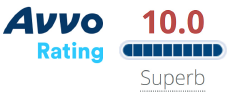What Does "Regular Occupation" Mean in a Disability Insurance Claim?
The overwhelming majority of employer provided ERISA group disability policies provide disability benefits for a certain period of time if you are unable to perform the material and substantial (or similar language) duties of your “own” or “regular” occupation. Although the semantics may differ from policy to policy, under the own/regular occupation period is intended to provide benefits if you cannot do the job you were performing prior to going on disability. The “own/regular occupation” period usually lasts anywhere from 12 to 24 months, and sometimes as long as 60 months or until age 67. One thing that many people become aware of after they have already filed for disability is the fact that the disability insurance carrier does not necessarily review their occupation as it is performed for a specific employer, but rather how it is performed in the national economy.
How an Insurance Company determines your Own/Regular Occupation
When a claim for disability insurance benefits is filed, the insurance company normally, but not always, obtains a copy of your job description from your employer; or in the alternative will send a claim form to be completed by you, the claimant, or by your employer as to the duties of your occupation. However, as noted above, this does not mean that the insurance company will take this information on face value. Often a vocational review is conducted to determine what occupation your actual job most resembles according to the Department of Labor (normally by way of the Dictionary of Occupational Titles (DOT) or O*Net) or some similar occupational resource. This is why if your claim has ever been denied and you say to yourself, “They got my job wrong. That isn’t what my job required.” Insurance companies usually have vocational consultants on staff and they will conduct their own vocational analysis.
The Dictionary of Occupational Titles (DOT) and O*Net
Chances are if your claim has been denied during the own/regular occupation period the denial letter contains some wording along the lines of, “Pursuant to the DOT, your occupation is classified as ____ physical demand level.” So what is the DOT? The DOT was a codification of occupations as set forth by the Department of Labor. Review of the DOT website indicates that the information contained in the DOT is dated, especially since the Department of Labor has no updated the definitions since the mid 90’s.
If you click to the O*Net link contained on the DOT website, it states that O*Net has replaced the DOT. Review of the job descriptions as identified on O*Net are much more in depth and provide a better comparison as to the actual demands of one’s occupation. However, more often than not insurance carriers rely solely on the DOT job description and not the O*Net. This is why when filing administrative appeals for clients under an ERISA Group Disability policies we always research the job descriptions for both the DOT and O*Net among other sources we rely upon. We routinely retain vocational consultants to conduct employability analysis and labor market analysis.
Resources to Help You Win Disability Benefits
Submit a Strong Appeal Package
We work with you, your doctors, and other experts to submit a very strong appeal.
Sue Your Disability Insurance Company
We have filed thousands of disability denial lawsuits in federal Courts nationwide.
Get Your Disability Application Approved
Prevent a Disability Benefit Denial
Negotiate a Lump-Sum Settlement
Our goal is to negotiate the highest possible buyout of your long-term disability policy.
Deadlines for you while theirs are ignored
Terrible Company
Extension
These people must not be human, they have no regard for people
FMLA denial after doctor who specializes in my syndromes submitted proper medical records and forms
Frustrating
Incompetent "Support"
Did Not Receive Payment
Why Must Your Disability Insurance Lawyer Understand Your Disabling Condition?
Disability Benefit Denial Reason #5 – Your Medical Evidence is Weak
Disability Benefit Denial Reason #4 - Your Doctor Is Misled By the Disability Company
Disability Benefit Denial Reason #3 - Video & Social Media Surveillance
How Do You Fight a Long-Term Disability Denial?
Disability Denial Reason #2 - Change of Disability Definition & Vocational Review
Disability Denial Reason #1 – Paper Review & IME
How to Apply for Reliance Standard Disability Benefits & Top 5 Reasons for a Claim Denial
Seven Surgeries and The Standard Still Denies Disability Insurance Benefits
Sun Life Wrongfully Denies Disability After Paying For 23 Months
Nurse Denied Long-term Disability Benefits by Lincoln After the Definition of Disability Changed
Lincoln Reverses Decision to Terminate LTD Benefits of Corporate Attorney after Dell Disability Lawyers Appeals the Decision
Transportation Manager with Brain Injury Wins Unum Disability Benefit Appeal
Prudential reverses decision to terminate LTD benefits of MRI Tech with Primary Progressive Multiple Sclerosis and degenerative Disc Disease
Engineer With Depression Wins Prudential LTD Appeal
New York Life Approves Disability Benefits for School Teacher With Multiple Sclerosis
Reviews from Our Clients






